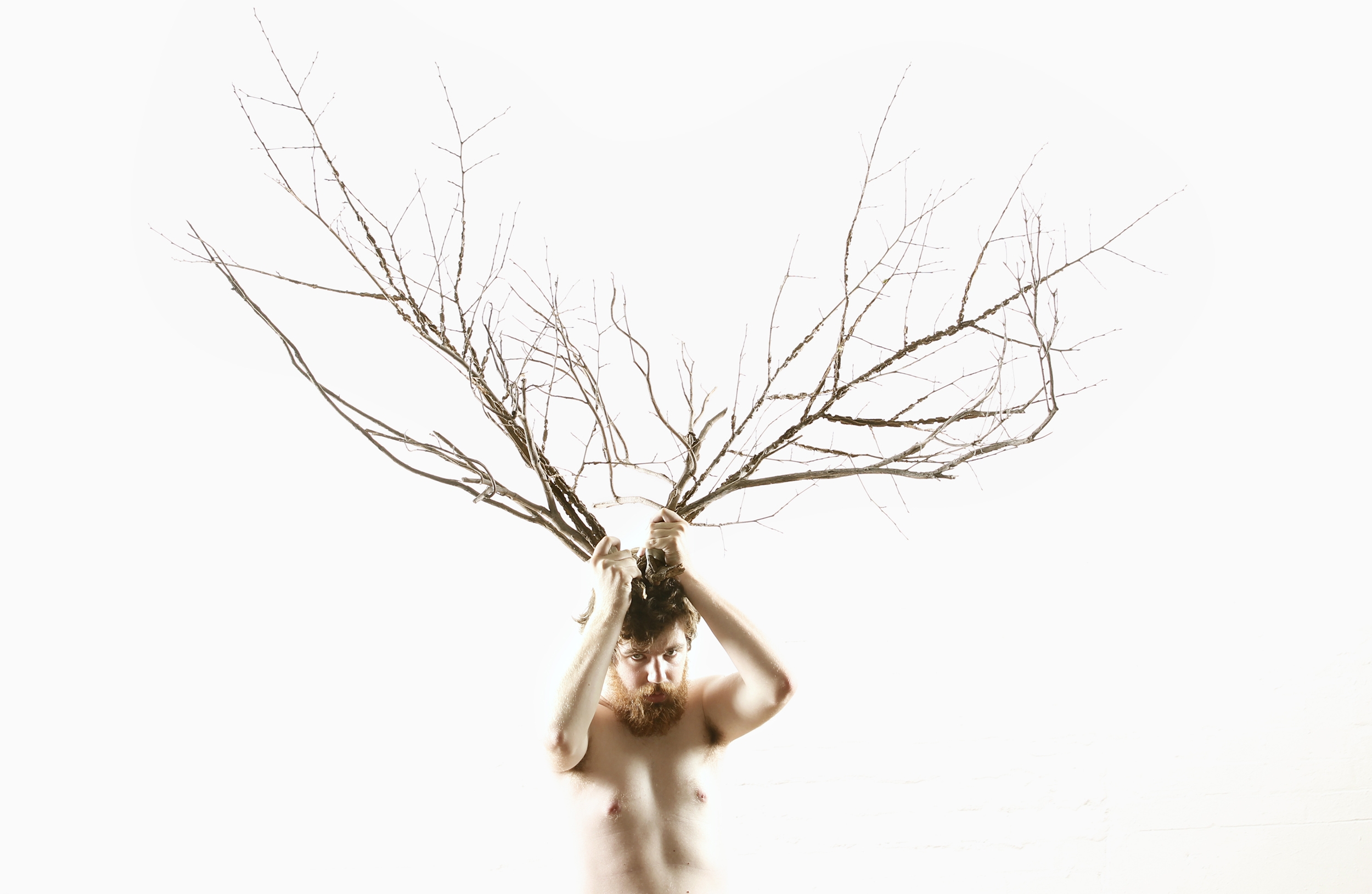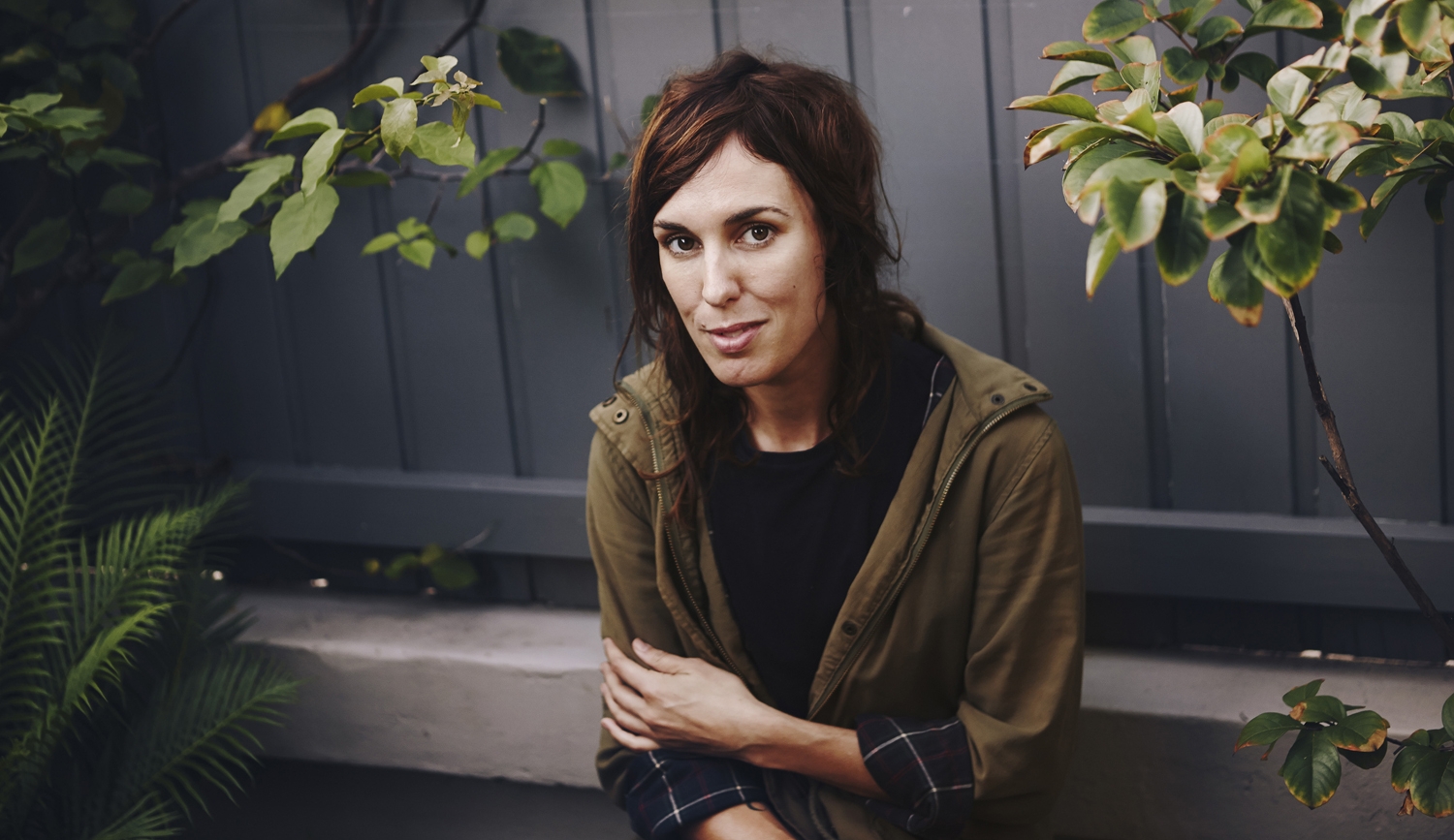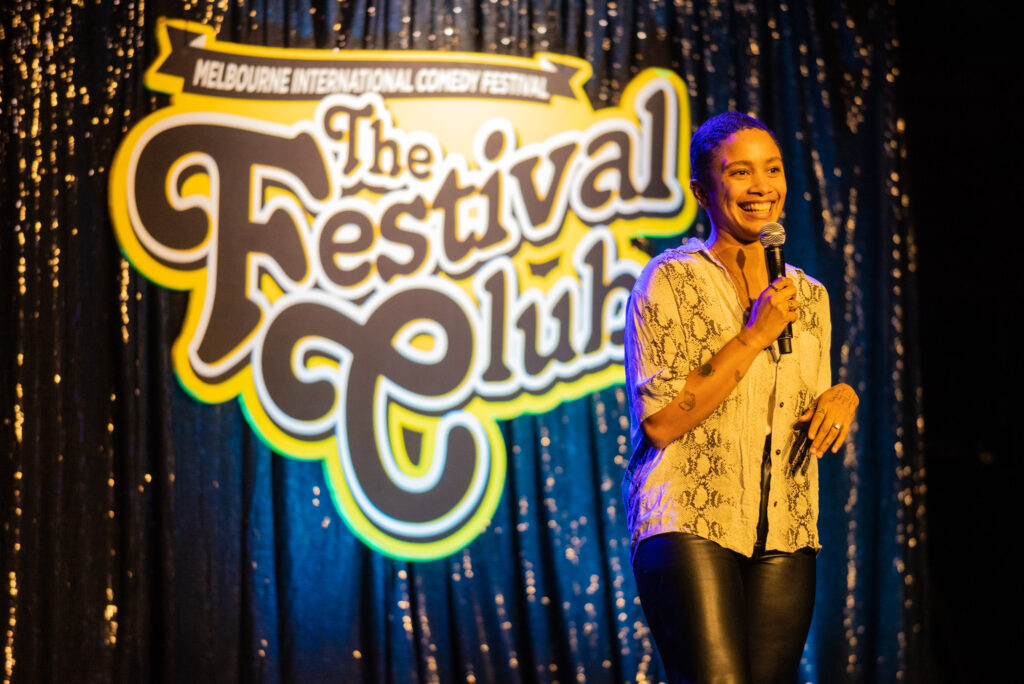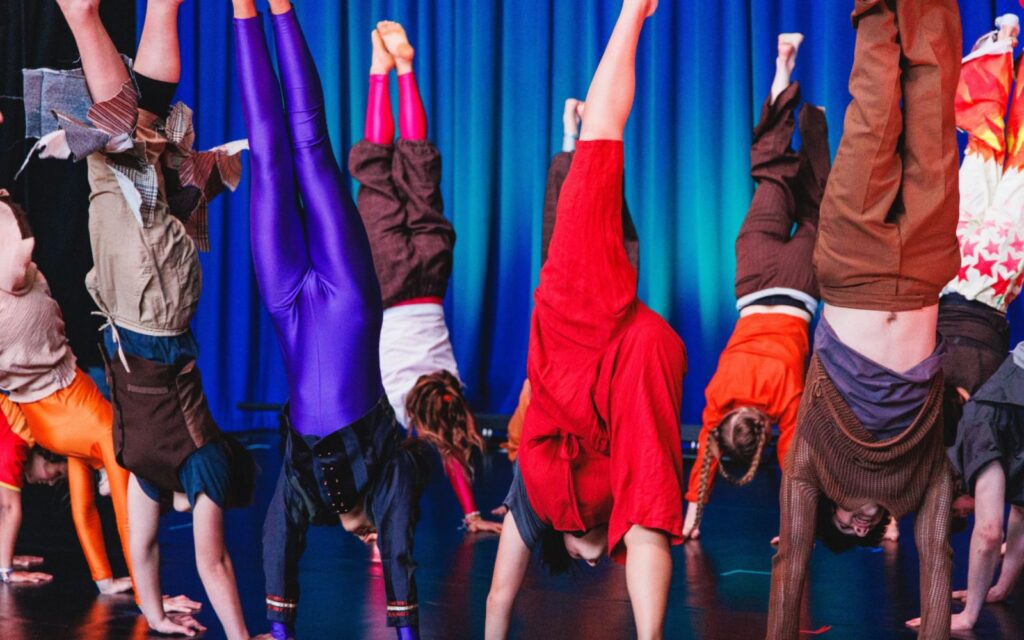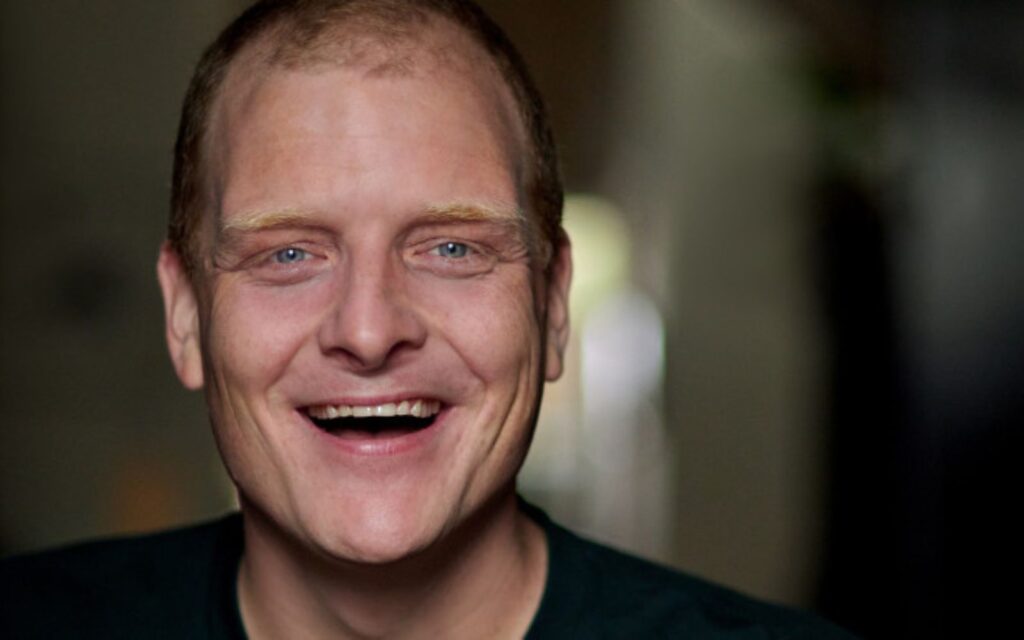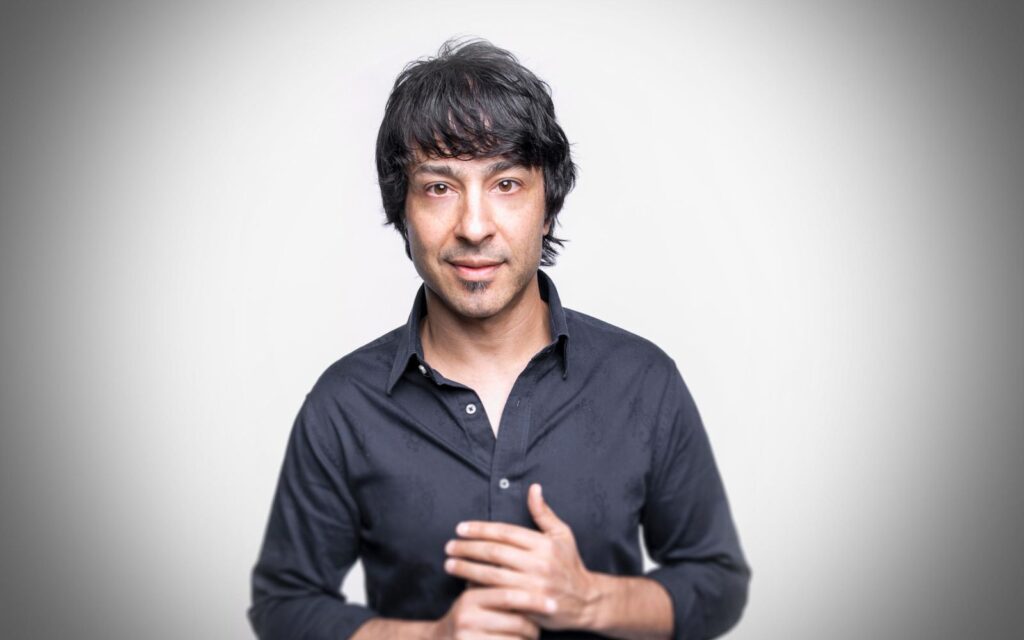The show’s official description begins with the statement, “We are finite in an infinite world: the punchline of existence is how little of it we’re given.” Such existential notions have given rise to plenty of great creative projects over the years, but they can also lead to nihilistic dead-ends or cheesy platitudes. Lady Eats Apple promises to avoid any such conclusion.
“Lady Eats Apple, through a very ambitious architectural intervention in Hamer Hall and through light and sound and a very sparse dialogue, looks at big issues – life and death – through sometimes a kind of cosmic lens and sometimes a very, very intimate domestic lens,” says executive producer Alice Nash. “It does look at death, but it affirms within that the strength of the human bond and intimacy. I wouldn’t say it’s nihilistic; I think it will be very touching and very affirming.”
These sound like weighty claims, but Lady Eats Apple hasn’t simply been thrown together in a matter of weeks. The world premiere is happening at the Melbourne Festival, but parts of the show were developed and performed at London’s V&A over two years ago.
“The topic that we looked at whilst we were at the V&A was ‘gods who are no longer worshipped,’” says Nash. “In particular we homed in on the fact that Victoria and Albert, as in Queen and King, were quite interested in mesmerism – so séances.”
Mesmerism, for those unfamiliar with the term, is a branch of hypnotism. “At one point in our show we are seeking to do something quite ambitious, which is to try represent the unconscious as landscape in theatre,” says Nash, “and that’s the kind of the uber-objective of this very epic, large scale show.”
Back to Back tend to take an ambitious approach to all of their productions. Longstanding director Bruce Gladwin is known to be a hard taskmaster, customarily putting the core ensemble members in challenging, sometimes frustrating positions. It might sound punitive, but the aim of this practice is for the actors to break down barriers and expand their artistic capacity.
“We’re always trying to make something that people have never seen before, something that people won’t expect from theatre and we are always trying to make something that seems a little bit beyond our own reach,” Nash says. “I feel very strongly in this case that we have bit off a very ambitious project and we are chewing into that. It’s not easy, but when we get there it should be an extraordinary experience for the audience.
“There will be moments where the audience are thinking, ‘I don’t know where we are. I don’t know where we’re going.’ Our hope is to elicit that response; that’s quite deliberate. But we’re not aiming for the audience to be terrified, but rather re-oriented by losing their orientation and then finding a grounding again.”
Bold, boundary-breaking theatre is the name of the game for Back to Back, but that doesn’t always result in large-scale productions. However, that’s certainly the case with Lady Eats Apple.
“Back to Back Theatre is intensely interested in architectural space, the relationship of audience to architecture, and the performance in which something is made,” Nash says. “We made Small Metal Objects, which was in the Melbourne Festival in 2005, and we had an audience in Flinders Street station and the audience wore headphones. After that we thought we could go into a theatre, so we made Ganesh Versus the Third Reich, which was a proscenium art show engaging very strongly in theatrical tropes and inverting them. With this piece we’ve gone one step further and we’ve inverted Hamer Hall.”
For the duration of Lady Eats Apple’s Melbourne Festival run, the revered Southbank theatre venue will be temporarily refurbished to contain two enormous inflatable chambers – one for the cast, one for the audience.
“The physical structure of Hamer Hall will change before your very eyes and in a sense we’ll be seeking to bring the narrative and the form of the play together. It’s almost like the set becomes a representation of the narrative.”
Back to Back’s previous work, Ganesh Versus the Third Reich,enjoyed mass adulation around the world, continuing to tour for over four years. Off the back of this success, it seemed inevitable for the follow-up to be of even greater stature. Though, the expanse of Lady Eats Apple wasn’t planned from the outset.
“We really never know where we’re going when we start making a work, and that’s one of the most amazing things about the company. We don’t start off with a script, we wouldn’t have a quick synopsis. The work’s made through a process of improvisation and then it reveals itself. Conversations are stolen from all over the place that end up in the script. It might be a conversation around the lunch table that ends up being quite an important scene.”
Perhaps that explains the apple in the title, then? You’ll have to head along to find out.
BY AUGUSTUS WELBY
